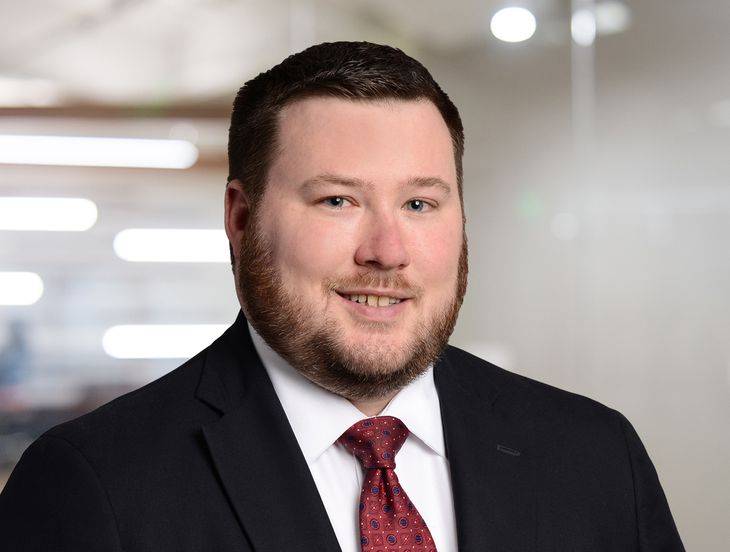Supreme Court’s EPA Decision May Spell Trouble for Other Agencies: An Employer’s Perspective
Insights
7.06.22
Given the consequential nature of many of the issues decided by the Supreme Court this year, employers can be forgiven for overlooking the Supreme Court’s June 30 opinion in West Virginia v. Environmental Protection Agency, a 6-3 decision that significantly limited the broad power the Environmental Protection Agency (EPA) attempted to exercise. But the theory used by the Court to knock back the EPA – a relatively obscure concept called the “major questions doctrine” – may impact workplace law in ways many could not have anticipated as recently as half a year ago. Under this doctrine, an agency must point to clear congressional authorization before engaging in action that courts conclude has broad-reaching economic and political significance. While SCOTUS has already notified the federal workplace safety agency that this theory could curtail its actions, many Court observers are now expecting to see an impact on wage and hour, labor, pay equity, and employment law in general in the coming years. What do employers need to know about this potentially significant development?
What the Decision Means for Employers
Last week’s decision did not directly involve workplace law but its ramifications on the workplace could be significant. In West Virginia v. Environmental Protection Agency, the Court concluded that the EPA could not implement and enforce its Clean Air Act regulations requiring power producers to shift energy generation from one energy sector (coal) to another (natural gas or solar). (You can read the full opinion here.)
But the theory cited by the Court could eventually have significant workplace law ramifications. The Court said that the agency’s Obama-era regulations violated the “major questions doctrine” because they would have far-reaching economic consequences without express congressional authorization. In arriving at its decision, the Court explained that the doctrine exists because it presumes “Congress intends to make major policy decisions itself, not leave those decisions to agencies.”
The decision signals this Court’s continued reliance on the major questions doctrine to limit the executive branch’s attempted expansion of agency power and authority. If this theory rings a bell, it may be because the major questions doctrine was recently utilized by the Court to strike down OSHA’s COVID-19 vaccine-or-test mandate.
When viewed in tandem, these two cases signal that the Court will no doubt be heavily scrutinizing agency action to determine whether they have far-reaching economic and political ramifications. The Court will also be scrutinizing agency action that it determines falls far outside the bounds of traditional action and enforcement, as pointed out in Justice Gorsuch’s concurring opinion.
Which Workplace Law Agencies Should be Concerned?
First and foremost, OSHA appears to be squarely in the current Court’s sights. Beyond the January decision that knocked back the COVID-19 ETS, the Court just gave a specific example in last week’s West Virginia decision concerning a hypothetical OSHA action. SCOTUS theorized that had OSHA attempted to justify the same energy-shifting scheme as the EPA because OSHA felt such a scheme would limit employee exposure to hazards like coal dust, such actions would also be scrutinized under the Major Questions Doctrine due to the wide-reaching political and economic consequences of such an action.
Moreover, OSHA is busy working on a slew of other regulations to raise the workplace safety bar on various industries (such as healthcare). The agency is on notice that some of these regulations might be stripped down or tossed out by federal courts if they extended the agencies’ power too far.
Beyond that, just about every agency that is teeing up broad regulations to accomplish key aspects of the current administration’s agenda should worry that the judicial branch will be scrutinizing its actions with a new weapon at its disposal. Specifically:
- Department of Labor: DOL has been very active in the wage and hour arena, creating a new and controversial tipped employee regulation and preparing to produce another rule to raise the compensation threshold level for white-collar exemptions to the Fair Labor Standards Act (FLSA) overtime requirements in October 2022. Also, DOL is attempting to kill a Trump-era regulation that makes it easier to classify workers as independent contractors, no doubt so that it can take a crack at issuing its own rule to tighten that standard.
- Pay Equity: Many expect to see the Biden administration reinstitute the federal EEO-1 “Component 2” reports that require employers to collect and turn over pay data and hours worked information to the government. This federal initiative, originally spearheaded during the Obama years and only briefly taking effect before being ended by the Trump administration, could be resurrected soon.
- National Labor Relations Board: While the NLRB mainly alters policy by issuing case decisions, it also engages in rulemaking from time to time. Currently, the Board is considering a proposed joint employment rule that would make it easier for workers to be considered employed by more than one entity for labor relations purposes. (The DOL is also working on a similar regulation for wage and hour purposes.)
All of this regulatory activity will be placed under a microscope given SCOTUS’s new emphasis on using the major questions doctrine to curtail agency activity.
A Silver Lining for Agencies
Many legal scholars and administrative-law practitioners had anxiously awaited the Court’s West Virginia decision because many thought it might revisit its landmark holdings in Chevron U.S.A., Inc. v. Natural Resources Defense Council, Inc., 468 U.S. 837 (1984) and Auer v. Robbins, 519 U.S. 452 (1997). Under the principle of Chevron deference, federal courts are required to defer to an agency’s interpretation of a statute if the underlying statute is unclear and the agency’s interpretation is deemed reasonable. Under Auer deference, federal courts must generally defer to an agency’s interpretation of its own ambiguous regulation. In 2019’s Kisor v. Wilkie, however, the Court made clear that agency deference was only required if the regulation is “genuinely ambiguous.”
In West Virginia, the EPA interpreted provisions of the Clean Air Act as permitting it to mandate energy generation shift from one sector to another to accomplish the dictates of the statute. Therefore, the Court could have analyzed the EPA’s interpretations of the Clean Air Act under Chevron or its own regulations under Auer. The Court, however, did not reach those issues because it relied on the major questions doctrine.
Consequently, federal agencies will still be permitted to argue that their interpretations of their statutes and regulations are reasonable and are afforded deference – and expect them to do so with a vengeance when questioned by opponents.
What Does the Future Hold?
Once the conservative majority took control of the Court, SCOTUS has shown a propensity to limit agency action and reign in what many critics believe to be agency overreach. The West Virginia decision is yet another case that firmly aligns with that trend. It further signals to agencies that they need to stay within their traditional sphere of regulation if they hope to not see their rules struck down.
Certainly, agencies will now work hard not to take action that results in broad political or economic consequences without being able to point to an express grant from Congress permitting it to act in such a manner. And you can be sure that opponents of regulatory action will be lining up to challenge agency rules by citing the major questions doctrine at every turn.
We will monitor developments related to this trend and provide updates where appropriate, so make sure that you are subscribed to Fisher Phillips’ Insights to get the most up-to-date information direct to your inbox. If you have further questions, contact your Fisher Phillips attorney, the authors of this Insight, or any member of our Workplace Safety Team, our Wage and Hour Team, our Pay Equity Team, or our Labor Relations Team.
Related People
-
- Kathleen McLeod Caminiti
- Partner and Co-Chair, Wage and Hour Practice Group
-
- Patrick W. Dennison
- Partner
-
- Curtis G. Moore
- Partner


